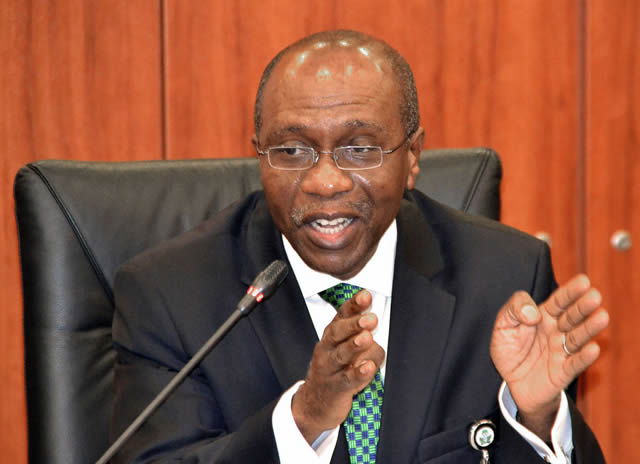- As MPC Meets Tomorrow, Analysts Predict Rates Retention to Further Check Inflation
As the monetary policy committee (MPC) of the Central Bank of Nigeria (CBN) converge in Abuja tomorrow for its maiden meeting this year, economic analysts have predicted that its members would vote for retention of the policy rates.
Specifically, the analysts believe the best way the CBN could go with the current challenges in the economy is to hold the monetary policy rate (MPR) so as not exacerbate the rising inflation, currently at 18.55 per cent, especially with widespread speculation of fuel price increase. It is one of the analysts’ view that, if the MPC decides against policy shift, the apex bank could avoid the wrath of the real sector, which is already groaning under monetary policy-induced challenges.
The MPR, which is the benchmark interest rate was retained at 14 per cent by MPC at its 253rd meeting in November last year. It predicated its decision on the need to mitigate the fragile macroeconomic conditions and the strong headwinds confronting the economy, particularly the implications of the twin deficits of current account and budget deficits. Besides retaining the MPR, the MPC also held the banks’ cash reserve requirement (CRR) and liquidity ratio (LR) at 22.5 per cent and 30 per cent respectively while further maintaining the Asymmetric Window at +200 and -500 basis points around the MPR.
The Chief Economist and Managing Director, Global Research, Africa, Standard Chartered Bank, Razia Khan, who presented the bank’s position, noted that “The absence of any further policy measures on FX liberalisation suggests that the CBN will be quite comfortable keeping interest rates on hold at next week’s MPC meeting.”
“Although inflation has been pressured higher, further tightening would be more plausible if there was some expectation that it might trigger a positive response from offshore portfolio investors, and bring about greater FX inflows. These plans look to have been put on the backburner for the moment,” Khan added.
Asking, “Could the CBN cut interest rates?”, Khan said, “We think not, despite weak growth.”
According to her, “Inflation in y/y terms is likely to remain elevated for a while still. There is also some disquiet about the recent spike in money supply, and how much of an inflation threat it represents. The CBN may well have to wait for evidence of a pronounced base effect driving y/y inflation down, before it can think about easing policy.”
In his analysis, The Chief Executive Officer, The CFG Advisory, Adetilewa Adebajo, stated that the main challenge for the MPC this New Year is “taming the inflation monster.”
“At 18.6 per cent inflation is at a 10-year high. It is also likely that 2016 Q4 GDP growth will close around -2 per cent in negative territory. Since there is a strong historical correlation in Nigeria between positive GDP growth and lower rates of inflation, the MPC will have to adapt inflation reduction policies to expect positive GDP growth in 2017.”
Adebajo contended that, “The prospects of increasing interest rates to tame inflation might not go down well with the Real Sector, but the impending increase in fuel pump prices and the related impact on spiking inflation will present a dilemma for the MPC. While a pre-emptive rise in rates might be strongly considered, it is likely that the MPC will hold rates and maintain status quo.”
Besides, the economist noted that, “The markets will also look for comments from the MPC, in an effort to restore confidence and harmonize the FX markets.”
To the Executive Director, Corporate Finance, BGL Capital Ltd, Femi Ademola, “The outcome of the MPC meeting is the most difficult to predict in recent times.”
According to him, “Judging from the antecedents of this Committee, the exchange rate volatility and high inflation would naturally signify an increase in interest rate and other macro-prudential ratios in the bid to fight inflation and attract supply of foreign exchange into the economy by ensuring a positive real return on portfolio investments.”
Ademola, however, added that, “Since these actions have not been so successful over the year in curbing inflation and exchange rate volatility, it would be very reasonable to consider monetary accommodation. Especially when it appears that the high interest rate with its consequent high cost of funds and high cost of production may be the main cause of inflation.”
“A reduction in benchmark interest and a systematic release of liquidity into the economy would help domestic production capacity and boost economic activities.
Due to this seemingly conflicting situations, I think the MPC will hold rates constant,” he posited.

 Naira4 weeks ago
Naira4 weeks ago
 Naira3 weeks ago
Naira3 weeks ago


 Naira4 weeks ago
Naira4 weeks ago




 Naira3 weeks ago
Naira3 weeks ago
 Commodities4 weeks ago
Commodities4 weeks ago


 Sport Business4 weeks ago
Sport Business4 weeks ago


 News3 weeks ago
News3 weeks ago


 Banking Sector4 weeks ago
Banking Sector4 weeks ago
























